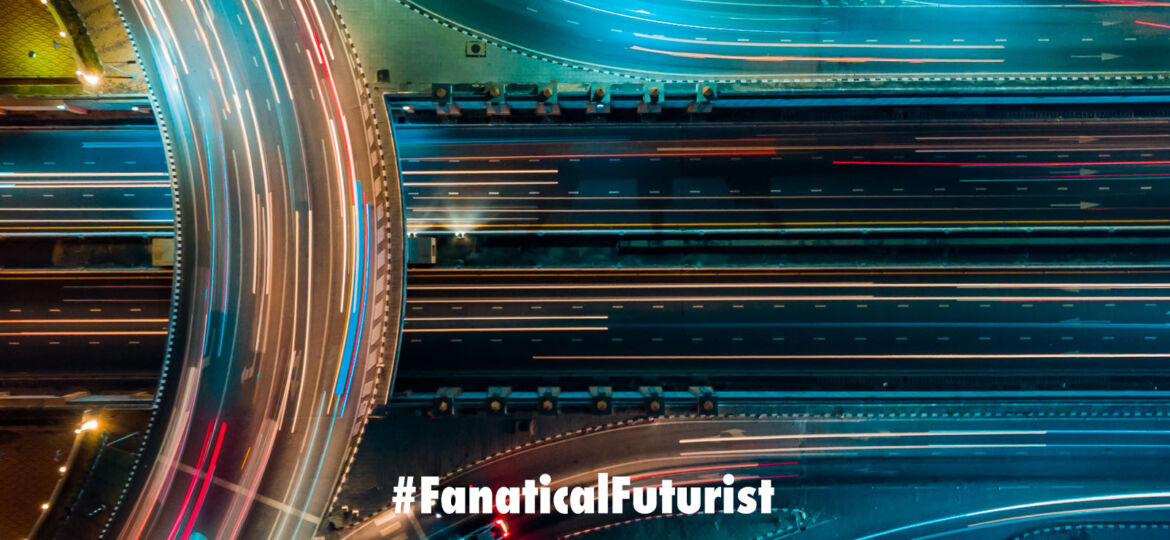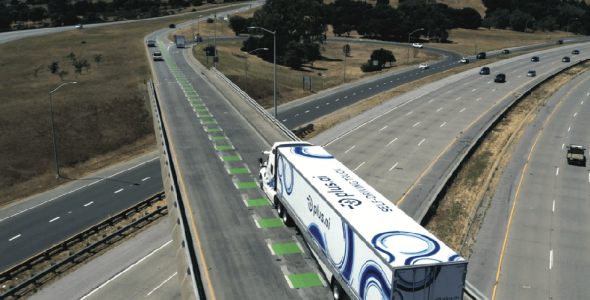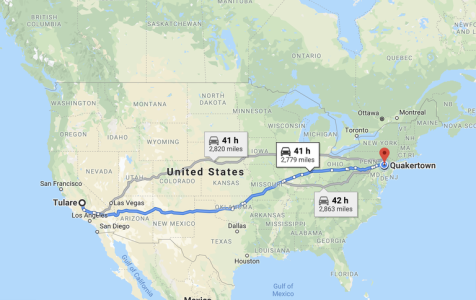
WHY THIS MATTERS IN BRIEF
All vehicles are going autonomous, and this is the first time a fully autonomous truck has successfully gone coast to coast across America.
 Interested in the Exponential Future? Connect, download a free E-Book, watch a keynote, or browse my blog.
Interested in the Exponential Future? Connect, download a free E-Book, watch a keynote, or browse my blog.
Frankly there hasn’t been much interesting news recently when it comes to the development of autonomous vehicles other than the fact they’re all improving, but if you happen to live in Quakertown, Pennsylvania, some 50 miles outside of Philadelphia, your next stick of creamy butter might just have been delivered by the first autonomous semi-truck to cross the entire continental US unaided, let alone the fact it’s also one of only a small number of autonomous vehicles to have ever made a commercial delivery with the honour of being first going to Otto, then a division of Uber that Uber then killed off a year later.
Plus.ai, the company behind the self-driving technology, announced the news on Tuesday. The company has only been around since 2016, so this is a particularly interesting feat.
The founders, a group of Stanford University students, knew that trucking, which has been experiencing a labor shortage since 2003, according to the Bureau of Labor Statistics (BLS), is the primary method for shipping goods across the US So they decided to apply their Artificial Intelligence (AI) know-how to long-haul trucking, building out the full-stack self-driving technology needed to make a cross country freight trip possible.
The trip took about 41 hours to complete, according to data from Google Maps, and spans over 2,800 miles. It took the Plus.ai truck three days to complete the journey, during which it made a few stops, but never because it couldn’t handle the driving. In fact, there was a safety driver aboard the vehicle, but they never had to take over and intervene for the truck other than during fuel stops and federally mandated breaks. The company said there were zero “disengagements,” where the truck lost control.
Back in March 2017, Plus.ai became one of the first autonomous trucking companies to land a California Autonomous Vehicle Testing License, which is exactly what it sounds like. According to the California Department of Motor Vehicles, there are now 65 companies that hold one of these permits.
To complete the long trip and deliver the butter before it perished, the truck relied on Plus.ai’s SLAM technology, which is an acronym for its instant positioning and map building solution. That includes a suite of sensors like cameras, lidar and radar, very similar to what you’d see in an Uber self-driving Volvo or an Argo AI Ford Fusion. What stands out is the company’s data fusion system, which combines this information to create a field of front detection that’s over 1,600 meters deep, allowing the truck to see far ahead. At the same time, Plus.ai achieves a wide field of view to help the truck adapt to new road shapes and slopes.
Let’s not forget that the damn thing was pulling around a refrigerated cooler with 40,000 pounds of butter onboard. The other primary obstacle, beside the perishable goods, was weather. This trip, which took place during the week of Thanksgiving, encompassed 12 states and some pretty inclement conditions, including snow.
Despite this success, Plus.ai is not operating in a vacuum, and competitors are working hard to accomplish much the same.
Over the summer, San Francisco-based Starsky Robotics partnered with Loadsmart, a New York City logistics company, to automatically dispatch a freight truck. Through Loadsmart, the goods were priced, tendered and booked. Starsky, which has remotely driven a freight truck over nine miles on an Orlando, Florida highway, can handle the actual driving too. That trip was the first unmanned test of a self-driving truck on a public highway. All this is to say that the partnership is working toward a human hands-free operation.
However, Trucking People LLC, a Houston, Texas-based talent acquisition firm specializing in the transportation industry, told Popular Mechanics that Starsky Robotics “laid all [of] their drivers off before Thanksgiving, and have left vendors stuck with invoices,” including Trucking People, itself.
So despite the successes this all just illustrates how nascent this technology truly is and the fact that players in the space can experience success and then fall – it’s an unpredictable market.
Meanwhile, there’s plenty of other competition.
Xos Trucks in Los Angeles is working with UPS to test fully electric delivery trucks. Pronto.ai, founded by former embattled Uber engineer Anthony Levandowski, has engineered a highway safety system that offers full adaptive cruise control, automatic emergency braking and proactive lane centering. TuSimple, based in San Diego, has partnered with the US Postal Service to haul trailers between Phoenix and Dallas. Aurora Innovation, Ike, Einride, Kodiak Robotics, and Embark also want a slice of the pie.
When long-haul autonomous trucking becomes an industry standard, railroads and other shipping options will feel the pinch, according to Omar Allam, a Twitter user who works in the trucking industry. He put together a topical thread to put Plus.ai’s feat into context. He says that Pepsico’s primary mode of shipping is through trucks, because it’s typically the fastest option, but the company will use railroad shipping in some cases to cut down costs.
“For Propel and Gatorade, the current routine shipment from Penn to San Fran area is about 9 days total. 7-8 days by rail from PA to Phx, then an additional 1-2 day transit by truck from Phx to San Fran. In urgent rushed cases, a direct truck between the two takes around 5 days,” Allam wrote. “Considering the estimated cost savings anticipated from autonomous vehicles, if the cost of a shipment in 5-15 years from Penn to Cali via self-driving truck comes even close to the cost of a rail shipment, neither rail, nor human-driven trucks, will stand a chance.”
Allam estimated truck transit times could be shaved down 30 to 50 percent and rail transit times could be shortened by 200 percent. For perishable goods, this is a huge deal. Tropicana drinks, he said, have a shelf life of about 30 days. Any extra time-on-shelf could lead to higher profit margins. Plus, a 3-day transit route rather than a 9-day trip means companies can become more discerning with products. That is, they can adapt to consumer demand much more adeptly with these shorter shipping times.
In turn, truck drivers, who earn a very livable middle class wage of around $43,680 per year, according to BLS data, will be hit, Allam said.
“Surely we won’t replace all 3.5 million truck drivers in 15 years, but even 1/5 of that number would be 750,000 drivers,” he wrote. “96 percent of whom are men, average age 49, average salary around 45k/year, all off of a high school education. That’s 750,000 families left with nothing.” And that’s a sobering thought.


















